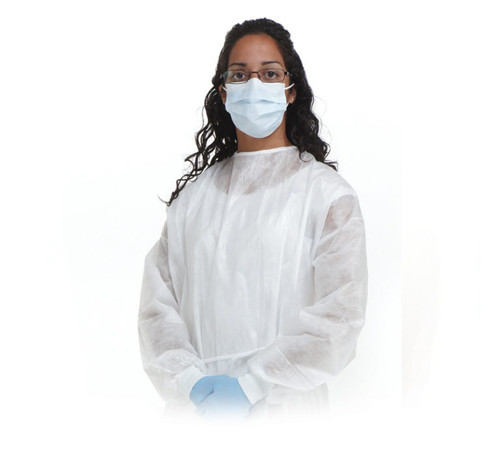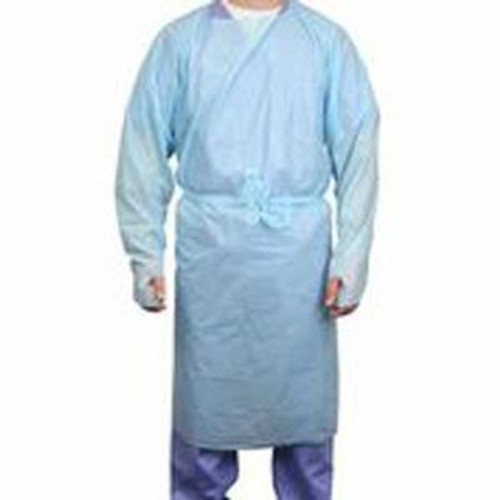- Designed for maximum barrier protection in demanding medical environments
- Primarily used in situations where there is a high potential for fluid exposure, including blood-borne pathogens and other infectious materials
Features:
- High-level protection
- Impervious material:
- Gowns are made from soft, embossed polyethylene, which provides a strong barrier against fluid penetration
- AAMI Level 4 equivalent:
- This level of protection, passing ASTM F1670 and F1671 standards, means the gown resists penetration by synthetic blood and blood-borne pathogens
- High-risk use:
- The "Hi-Risk" designation indicates suitability for procedures with a high likelihood of heavy fluid contact and potential exposure to infectious agents
-
Comfort and usability
- Universal sizing:
- One-size-fits-most design simplifies ordering and ensures the gowns can be worn by a wide range of individuals
- Thumb-loop cuffs:
- Cuffs help prevent the sleeves from riding up under gloves, providing additional protection for the vulnerable wrist area and making it easier to don gloves
- Easy donning and removal:
- Features like an over-the-head neck and an open back design allow for quick and easy removal to prevent cross-contamination
- Latex-free:
- Constructed without natural rubber latex, making them a safe choice for users with latex allergies
- Comfortable design:
- An open back allows for better airflow, reducing heat buildup for wearer comfort during extended use
-
Convenience and storage
- Compact packaging:
- Gowns often come in compact dispenser boxes, which are designed to use less space than conventional gown packaging
- Single-use:
- The disposable, single-use design helps reduce the risk of cross-contamination by eliminating the need for reprocessing
- Non-sterile:
- These are non-sterile isolation gowns intended for general use where a sterile field is not required







